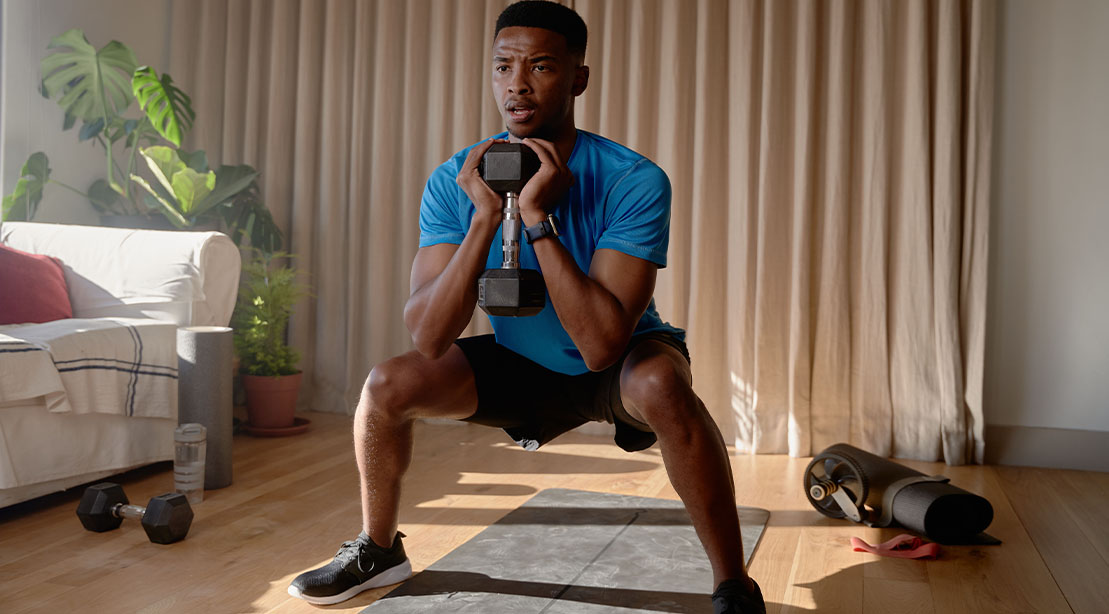As we learned in part 1 of this series, the squat pattern can take on many identities, and the best version is the best version to suit your comfort levels, body type, and individual goals. Depending on the skill level of the individual, the training effect that can be received from squat variations can vary from person to person.
Last article, the overhead, front, and back squat variations demonstrated a good range of skill sets and training levels necessary to pull the movements off, and this time around, the aim was to show two lesser-practiced variations, along with one old-school classic that should be a worthwhile starting point for virtually everyone.
The Top 3 Effective Squat Variations For Your Legs
Zercher Squat
This squat variations can be worth its weight in gold for those who have a history of back problems. The Zercher squat creates a solve for the issue of spinal loading by placing the weight in the extremities rather than the axial skeleton. Likewise, taller, long-legged lifters (like me) would benefit from the counterbalance the Zercher squat can provide. As a by-product, this move will blast your abs and obliques due to the load placement and the fight you’ll need to make to stay tall and not let the bar pull you down. But you’ve got to be tough to do Zerchers. As the weight gets heavier, the load can get harder on the arms –and there will ultimately be a ceiling on how much a lifter can carry.
How To do the Zercher Squat
Set the bar up in the squat cage at waist level. If you need to, wrap the bar with a towel, pad, or fat grips. Step in close, and cradle the bar in the arms with the knuckles pointing straight up to the ceiling. Keep the hands interlocked, and elbows no more than shoulder width apart. When taking the bar out of the rack, you should be in a quarter squat position. With the bar now in the crook of the arms, step backwards carefully and assume your ideal squat stance. Keep the bar close and the knuckles facing up as you descend to your bottom range (it’s easy for the hands to start falling as you get deep). Use the weight of the bar as a counterbalance and stay tall. Exhale on the way up.
One pro tip: Try placing fat grips on the barbell where it contacts the arms. The added surface area will be much more comfortable when the name of the game is moving heavier weight in this pattern.
Hip Belt Squat
In a similar category reserved for those who deal with back problems (even during an injury), this is another light at the end of the tunnel. Since the load is attached from the waist down, this can really salvage the lower spine from enduring forces. It also allows the lifter to focus on the legs without any upper body or core strain at all. Plus, the free upper body allows you to customize your torso angle tofind the right “groove” that suits you biomechanically. The hip belt squat is suitable for higher reps due to the lowered risk for technical breakdown or injury.
How To Do The Hip Belt Squat
Set the hip belt on the part of the lumbar region that feels most comfortable for you. Take a knee and attach the hook to the machine. Now loaded, stand up and pull the handles of the machine toward to you to free the movement. Maintaining a strong grip on the handles, squat deep. Aim to break parallel. Return to your top position while exhaling and repeat. As a side note, be sure to line yourself up on the correct part of the platform, relative to where your hip belt is attached. The idea should be a fairly vertical patterning up and down.
Goblet Squat
If you’re a beginner who just needs to learn or ingrain the squat pattern, you’ve found the place to get your start. It’s an elementary version of the front squat, that requires far fewer mobility prerequisites, while still aiming for good depth. Though it’s difficult to go heavy since you’re holding a dumbbell in your hands, it’s a great tool for high-rep conditioning, maintaining form, and being able to squat at low risk without a cage.
How To Do The Goblet Squat
Using a dumbbell, hold it vertically so that your hands are cupping one end of it, and the other end is hanging below. Hold the weight close to the torso at shoulder level. Assume your ideal squat width, and Maintaining a vertical torso, descend slowly to your bottom end range. Exhale on the way up and repeat.
